PMP Certification Study Notes 1 – Terms and Concepts
UPDATED for the new PMP Exam in 2023. Happy learning!
This series of PMP study notes is impossible without the contribution of many Aspirants. Without their feedback and input, I cannot continually improve and enhance the study notes to cover the updates in PMBOK® Guide 6th edition. I am so grateful that my study notes are useful to Aspirants.
Article Highlights
Important PMP Terms and Concepts (covering Section 1, 2 and 3 of the PMBOK® Guide 6th Edition)
Project
- Project – a temporary endeavor to create a unique product, service or result (or enhancement of existing services/products (e.g v.2 development is a project) ) — may be collectively termed as deliverable — (vs ongoing operations which manage processes in transforming resources into output) sometimes may involve handing over the deliverable to the operation teams for continuous operation
- Project drives changes in the organization and often is a means to create business values and to achieve organizational goals — the net quantifiable benefit derived from a business endeavour which can be tangible or intangible.
- Projects operate in an environment that may have favourable or unfavourable impacts on them. Two major categories are:
- Organization Process Assets is a major input in all planning process, which may be kept at PMO, directly related to project management, including Processes and Procedures (including templates (e.g. WBS, schedule network diagrams, etc.), procedures for issuing work authorizations, guidelines, performance measurements) and Organizational Knowledge Repositories
- Enterprise Environment Factors (often are constraints) are influences not under control of the project team that will affect the project, either intra-organization and extra-organization, e.g. organizational culture, organization structure, existing human resources, work authorization system, PMIS, market conditions, legal requirements, technology
- EEF are inputs for all initiating, most planning process, not much in the executing/controlling process, none in closing process
- Projects often involve more risks and uncertainties than operations and thus require more planning
- The following factors influence the operation of the organization which may lead to the need for projects:
- Regulatory/legal/social requirements changes
- Stakeholders needs/requests
- Changes in technology/business
- Improvements, rectification and enhancements to processes/products/services
- A project can be subdivided into phases, each phase is a collection of logically related project activities that result in the completion of deliverable(s). Towards the end of each phase is a “Phase Gate” which determines whether the project will go on or not.
- Process – a package of inputs, tools and outputs, there are 49 processes defined by PMI. Processes are grouped in the PMBOK® Guide into 5 Process Groups (NOTE: Process groups are not the same as project phases).
- Portfolio > Program > Project
- Program – a group of coordinated projects, taking operations into account, maybe with common goals, achieving benefits not realized by running projects individually, if only the client/technologies/resource are the same, then the projects should be managed individually instead of a program
- Portfolio – a group of programs and/or projects to achieve organizational strategic goals within the organization with a view to maximizing the value to the organization
- Actively coordinating and managing portfolios, programs and projects through organizational project management (OPM) best position the organization to achieve strategic business goals.
- Use of portfolio/program/project management to bridge the gap between organizational strategy and business value realization
Project Management
- Project Management – the application of (all appropriate) knowledge, skills, tools & techniques and whatsoever to manage project activities with a view to meet the project requirements and achieve customer satisfaction
- The most important task is to align stakeholder expectations with the project requirements, around 90% of the PM’s work is related to communication with stakeholders
- PMBOK® Guide is a framework/standard but not methodology (agile, scrum, PRINCE3, etc.) — A framework allows flexibilities while a methodology would require the use of a predefined system of practices, techniques, procedures and rules.
- Project management emphasizes tailoring — selecting the appropriate project management processes, inputs, tools, techniques, outputs and life cycle phases according to the unique nature of each individual project.
- Competing constraints: time, cost, scope, quality, risk, resources
- Project Management Business Documents
- Project Business Case — documents the economic feasibility vs benefits of the project and is used for authorization of project management activities.
- Project Benefits Management Plan —describes how and when the benefits of the deliverables of the project will bring and describes how to measure the benefits (also including the alignment with organization strategies, assumptions and risks)
- Project Charter — authorizes the project and names the project manager
- Project Management Plan — how the project will be performed and managed – documents assumptions & decisions, helps communication between stakeholders, goals, costs & time scheduling (milestones), project management system and subsidiary management plans and documents
- Project Success Measures — project success is now more inclined to be measured by considering the achievement of project objectives as documented in this document
Role of the Project Manager
- Project Manager: an individual assigned by the organization to lead the team and is responsible for achieving project objectives
- is the leader of the project irrespective of the authority
- should consider every process to determine if they are needed for individual projects (tailoring)
- the exact role of project manager is to be tailored to suit the needs of individual organizations and projects
- may report to the functional manager, program manager, PMO manager, operation manager, senior management, etc., maybe part-time or devoted
- identifies and documents conflicts of project objectives with organization strategy as early as possible
- Skills required of project managers:
- Technical project management — process tailoring, planning, managing schedule/cost/resources/risk
- Leadership — communication (within team and with stakeholders), team building, motivation, influencing, coaching, trust building, conflict management, negotiation
- Strategic and business management — be aware of the high-level strategies of the organization and effectively implement decisions/actions that align with strategic goals (Organization Strategy may be expressed through mission and vision)
- Project Manager must balance the constraints and tradeoffs, effectively communicate the info (including bad news) to the sponsor for informed decisions
- Project Manager needs to involve project team members in the planning process
- Project Manager needs to perform integration at process level, cognitive level and context level
- Project Team includes Project Manager, project management staff, project staff, PMO, SME (subject matter experts can be outsourced), customer representative (with authority), sellers, business partners, etc., maybe virtual or collocated
- Senior management must be consulted for changes to high-level constraints
- Leadership vs Management:
- Lead: guide through interactive discussion from one point to another
- Manage: direct a person to perform a set of expected behaviour
- Leadership styles:
- Laissez-faire
- Transactional
- Servant leader
- Transformational
- Charismatic
- Interactional
Organization System
- The organizational system determines the power, influence, competence, leadership and political capabilities of the people who can act within the system. e.g.
- Management Elements — general management principles/rules of the organization, e.g. disciplinary action, division of skills, authorization model/practices, communication channels
- Organizational Governance Frameworks — framework/processes describing how authority within the organization is exercised
- Organizational Structure Types
- Organic or Simple
- Virtual
- Projectized (project manager has the ultimate authority over the project, team members are often collocated)
- Matrix (Strong, Balanced, Week)
- Functional
- Composite/Hybrid – a combination of different types, depending on the actual need
- PMO
- Tight Matrix = co-location, nothing to do with the organization type (not necessarily a matrix org.)
- Functional organizations => the project manager has little authority, often called project expeditor (no authority) or coordinator (little authority), project coordination among functional managers
- Matrix organization => multiple bosses and more complex
- Project Management Office (PMO) – standardizes governance, provides training, shares tools, templates, resources, etc. across all projects/programs/portfolios
- 3 forms: supportive, controlling and directive (lead the project as PM)
- functions: training, resource coordination, methodology, document repository, project management oversight, standards, career management of PMs
- may function as a stakeholder / key decision maker (e.g. to terminate the projects)
- control shared resources/interdependence across projects at the enterprise level
- play a decisive role in project governance
Project Life Cycle vs Project Management Life Cycle vs Product Life Cycle
- Project Life Cycle: includes: initiating, planning and organizing, carrying out/executing work, closing the project. Project life cycles are independent of a product life cycle.
- Within a project life cycle, there can be one or more phases of the development of the product, service, or result (a.k.a. development life cycles) with the following models:
- Predictive [plan driven/waterfall] – scope, time and cost determined early in the lifecycle, may also employ rolling wave planning
- Iterative – repeat the phases as understanding of the project increases until the exit criteria are met, similar to the rolling wave planning, high-level objectives, either sequential/overlapping phase, scope/time/resources for each phase may be different
- Incremental – features/scope are added to each incremental cycle
- Adaptive [change driven/agile] – for projects with high levels of change, risk and/or uncertainty, each iterative is very short (2-4 weeks), work is decomposed into product backlog, each with a production-level product, scrum is one of the most effective agile methods, stakeholders are involved throughout the process, time and resources are fixed, allow low change cost/keep stakeholder influence high
- Hybrid
- The life cycle chosen must be suitable for the intended deliverable and flexible enough to deal changes.
- each project phase within the product lifecycle may include all the five project management process groups
- Product life cycle: development > production > adoption & growth > maturity > decline > end of life
Other Important Project Management Terms
- The Configuration Management Knowledge Bases contain baselines of all organization standards
- Lessons Learned – focus on the deviances from plan (baseline) to actual results and how to solve these discrepancies
- The work authorization system (WAS) is a system used during project integration management to make sure that the right work gets done at the right time
- PMIS includes configuration system and change control system
- Never accept a change request to trim down one element of the triple constraint without changing the rest.
- Sponsor – provides resources/support to project, lead the process through initiation (charter/scope statement) through formally authorized, later involved in authorizing scope/budget change/review
- Customer – NOT necessarily provide the financial resources, may be external to the organization, final acceptance of the product
- Business Partners – certification body, training, support, etc.
- Project Statement of Work (SOW): describes the business need, high-level scope of deliverables and strategic plan of the organization, created by the sponsor/initiator/buyer
- Project Charter is not a contract
- Project Management Plan is NOT a project schedule
- Project Management System: includes a list of project management processes, level of implementation (what actions to take in the management processes), description of tools and techniques, resources, procedures, change control system [forms with tracking systems, approval levels]
- Requirement Traceability Matrix (RTM) – a matrix connecting deliverables to requirements and their sources (for managing scope)
- Work Breakdown Structure (WBS) – a hierarchal chart of decomposing deliverables into work packages
- Activity List – a full list of all activities with indication of relationship to the work packages
- Activity Attributes – further information (duration, start date, end date, etc.) of all the activities in the list (for scheduling)
- Roles and Responsibilities (RAR) – a document listing all the roles and description of their responsibilities in the project (often by category)
- Responsibility Assignment Matrix (RAM) – a matrix connecting people to work packages/activities, e.g. the RACI matrix (responsible, accountable, consult, inform), usually only one person is accountable for each activity
- Resources Breakdown Structure (RBS) – a hierarchical chart listing all the resources by categories, e.g. marketing, design, etc.
- Risk Breakdown Structure (RBS) – a hierarchical chart listing all risks by categories
- Project Management Data and Information
- Work Performance Data – raw data collected
- Work Performance Info – analyzed in context and integrated data, e.g. some forecasts
- Work Performance Reports – work performance information compiled in report format
- Sunk costs – money already spent, not to be considered whether to terminate a project, similar to committed cost (often through contracts)
- Direct costs, indirect (shared) costs, Fixed costs, Variable costs
- Law of diminishing returns – beyond a point, the more input, the less return
- Working capital – assets minus liability, what the company has to invest in the projects
- Payback period – a time to earn back capital investment
- Benefit-cost ratio (BCR) – an indicator, used in the formal discipline of cost-benefit analysis, that attempts to summarize the overall value for money of a project
- Depreciation – straight-line depreciation vs accelerated depreciation (the amount of depreciation taken each year is higher during the earlier years of an asset’s life)
- Under double declining balance, the asset is depreciated twice as fast as under straight line. Using the example above, 10% of the cost is depreciated each year using a straight line. Doubling the rate would mean that 20% would be depreciated each year, so the asset would be fully depreciated in 5 years, rather than 10.
- Under sum-of-the-years-digits, the asset is depreciated faster than the straight line but not as fast as declining balance. As an example of how this method works, let’s say an asset’s useful life is 5 years. Adding up the digits would be 5+4+3+2+1 or a total of 15. The first year, 5/15 is expensed; the next year 4/15 is expensed, and so on. So if the asset’s cost is $1000, 5/15, or $333.34 would be expensed the first year, $266.67 the second year, and so on.
- Economic value added – the value of the project brought minus the cost of project (including opportunity costs) e.g. for a project cost of $100, the estimated return for 1st year is $5, assuming the same money can be invested to gain 8% per year, then the EVA is $5 – $100 * 8% = -$3
- Net present value (NPV) – the sum of the present values (PVs) of the individual cash flows of the same entity
- Present value (PV) – or called present discounted value, is a future amount of money that has been discounted to reflect its current value, as if it existed today (i.e. with inflation, etc.)
- Future value (FV) – is the value of an asset at a specific date
- Internal Rate of Return (IRR) – The inherent discount rate or investment yield rate produced by the project’s deliverables over a pre-defined period of time.
- Forecast (future) vs Status Report (current status) vs Progress Report (what have been done/delivered)
- Journey to Abilene (Abilene’s Paradox) – committee decisions can have a paradox outcome, the joint decision is not welcome by either party (because of fear of raising objections)
- when something unusual happens, always refer to the PM Plan/Charter for instruction on how to proceed; if not found, ask for direction from the management
- unresolved issues will lead to conflicts
Further PMP Study Resources
- 47+ Commonly Confused PMP Term Pairs with detailed explanations (updated for the new PMP Exam) — there are many PMP term pairs that look very similar but are quite different in meaning. The PMP Exam questions may test Aspirants’ understanding of these terms and how to distinguish between them.
Most Popular PMP Certification Exam Articles
- My Exam Prep Tips and Free Resources (I got 4P and 1 MP)
- How to Get 35 Contact Hours Fast and Easy?
- Detailed Comparision of online PMP Courses
- Over 1000+ FREE Quality Mock Exam / Practice Questions
- A FREE Guide to Formulas and Calculation (with explanation and sample questions)
- 47 Commonly Confused Terms with detailed explanation



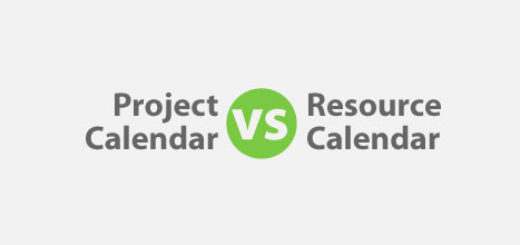
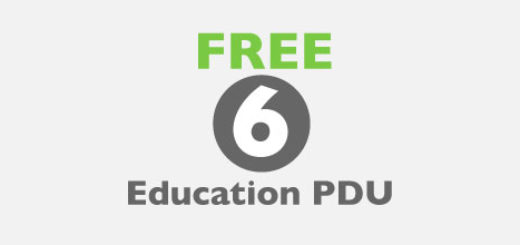
 Hi, my name is Edward Chung, PMP, PMI-ACP®, ITIL® Foundation. Like most of us, I am a working professional pursuing career advancements through Certifications. As I am having a full-time job and a family with 3 kids, I need to pursue professional certifications in the most effective way (i.e. with the least amount of time). I share my exam tips here in the hope of helping fellow Certification aspirants!
Hi, my name is Edward Chung, PMP, PMI-ACP®, ITIL® Foundation. Like most of us, I am a working professional pursuing career advancements through Certifications. As I am having a full-time job and a family with 3 kids, I need to pursue professional certifications in the most effective way (i.e. with the least amount of time). I share my exam tips here in the hope of helping fellow Certification aspirants!

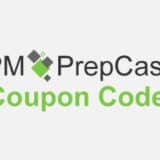
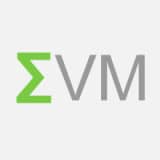


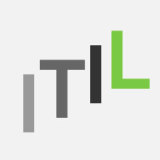
Thank you for sharing this, very helpful
Great job has simplified the Exam Preparation
Plan to take exam by end April, 2020, Interested in 30 days mock exam package preferably by process vise initially and last 3 full exams
Please advice and the price
I took this course to succeed in getting PMP certified. Hope you will find this useful:
https://edward-designer.com/web/pm-prepcast-review/
Wish you PMP success!
Hi Edward , thank you for your amazing information in your page
I have face a situation in my work as a software project manager , i have doubts on the best action to take based on PMBOK® Guide 6th Edition ?
Can i forward my question and the related answers i think about it to you ?
thanks
shady fawzy
Just send me the questions. However, I am not sure if I know the best answer to this as I am limited to web projects. Thanks!
I love your website! however, could you guide me to a page where you can align the new PMP 2020 exam, people.process and biz environment to the study notes/materials based on the new eco ?
Sure, will write a page on that once things are getting clearer. Thanks!
4.4 Manage Project Knowledge: the Lessons learned register is an Input to this process. It also an Output, but not updated Output. My question is where is the Lessons learned register created? I thought it was created in the Manage Project Knowledge process. (??)
Thank You for answering my question and for hosting this wonder, insightful, invaluable site.
The Lessons Learned Register is both an input and an output in the Manage Project Knowledge process. The Lessons Learned Register can be an originally blank document following the template of the organization (if any). Thanks!
Wish you PMP success!
I passed my exam today. Thank you so much for this material. Although I could not relate much with the exam questions but the key points here helped me elemiinate some of the options. I read your page 3 times before the exam and also read the pmp book 10 times. Very greatful to you. Cheers.
Lessons learned
I found out that the simulation test and the PMP exams are very different.
I did not get any repeat questions.
Answer all questions proactively
Use critical thinking and analyze situation
Finished 5 mins early
Did not make use of cheat sheet
You did it. Congratulations! Would like to hear your exam lessons learned in more details as this would be very useful to fellow PMP Aspirants!
1st let me say Thank and God Bless you. You have helped me immensely.
I am studying for the CAPM and would like to know if there are formula questions (EVM) on the CAPM exam & also should I get/buy a PMP exam simulator or a CAPM exam simulator?
Thank You
Yes, EVM questions are there, but to a much lesser extend and difficulty. If you are studying for the CAPM, better to order the CAPM exam simulator. Wish you success!
Hi Edward,
Thank you fro this article. Very interesting to read and we can able to understand about PMP. I already read some fact about PMP, That after you passed the exam you have to renew it again after 5 years and you have to show also the projects you have done. So how did you work on your project? are you doing it as freelancer or you need to be employed to practice your professions? Thank you.
Congratulations and thanks a lot for telling me this great news!
To renew the PMP Certification, you will have to accumulate 60 PDUs for every 3 years and renew the certification then. There is no need to show the projects you have completed during the 3-year period. You will just need to show your experience during your initial application for the PMP Exam. Wish you PMP succeed!
I passed my pmp at this very last moment before 2020 ends, I would like to express my gratitude to Edward as all the notes and advices shared are useful and helped me to pass the exam, thank you!!!
Dear Edward,
As I was studying for the PMP (started 3 months back), I discovered your website and I have to say that it is VERY good and useful and complete. It helped me greatly in my studies and learning. I read PMbok twice, Rita book twice (I recommend to do all the exercises as they really helped gain deep knowledge and understanding). I passed my PMP exam today, Proficient on all process groups… so happy!! the questions were 95% situational and it was a very dense focused 4-hour session; I did not have time to take a break. So thank you for the great website and all the information provided. I am thinking of doing other certification and your website is in my favorites!
Dear Sylvie,
Congratulations on passing the PMP Exam with all Proficient. You did much better than me! Would you mind sharing your lessons learned which will be *very* useful for fellow aspirants!
P.S. Free ways to get PDUs: https://edward-designer.com/web/ways-get-free-pdu-pmp-pmi-acp/
Hi Edward,
I will sit for the PMP Exam in 13 days. I have read Rita twice, went through PMBOK once. I have done at least 2,000 practice test questions. I presently am scoring in 50 question lite exams from PMtraining.com in the 76%-90% range on each exam, with an average of 80%+ in total (paid exams). I did the PMstudy 200 question exam and scored a 76% and that was skipping about five questions regarding drawing network diagrams as I had no pen and paper with me while taking the exam. I scored a 77% on the Simplilearn free exam. I am nervous about the exam, as it seems many sites state on internet state one should be performing in the 80% plus range on mock exams regularly. Any thoughts on the matter?
Hi Aaron,
Judged from your performance of the mock exams alone, I would say that you stand a high chance of passing the PMP Exam in your first try. Mock exams results in the range of 75-80% are already quite good indeed! Have you tried other mock exams listed here:
https://edward-designer.com/web/list-of-free-pmp-exam-questions/
Remember to be psychologically prepared for some more difficult questions at the beginning of the exam that may adversely affect your confidence. As you have already tried your best in your PMP preparation, have confidence in yourself!
Wish you PMP success! Do let me know your success story!
Hi Edward, so kind of you to share the notes to others. This is of great help to me and am sure its helpful for lots of others too.
Hi Edward,
would like to hilight that in your project charter statement it shows project charter signed by Sponsor, however as per PMBOK , project charter authorized by sponsor and commit to the project and signed done by Senior Management.
Thanks for your clarification!
Hello Edward,
I think this is great that you are offering these tips, notes and your perspective about the ITIL, PMP and Agile for the masses. I will continue to check your website. Great Job!
Thank you,
Mark